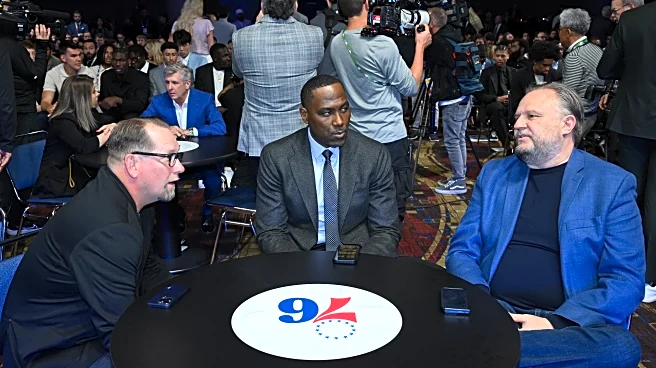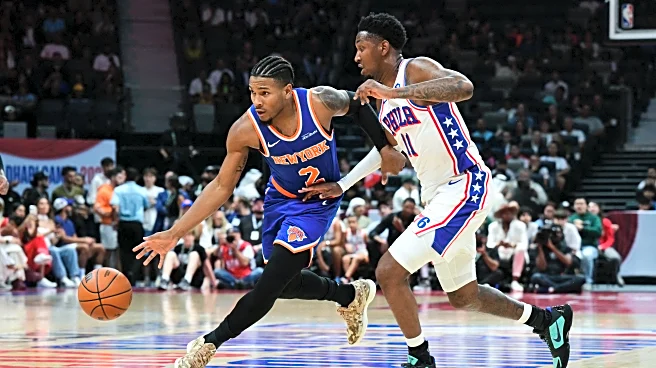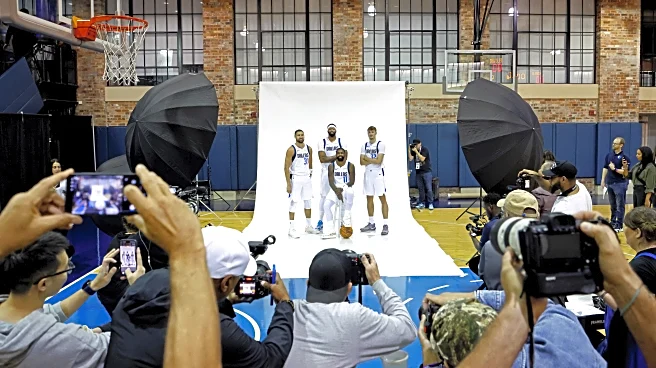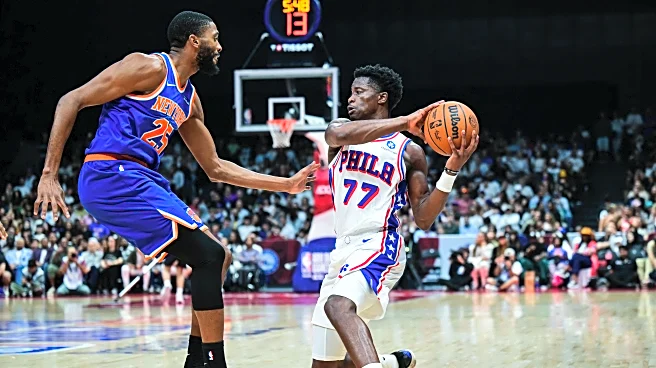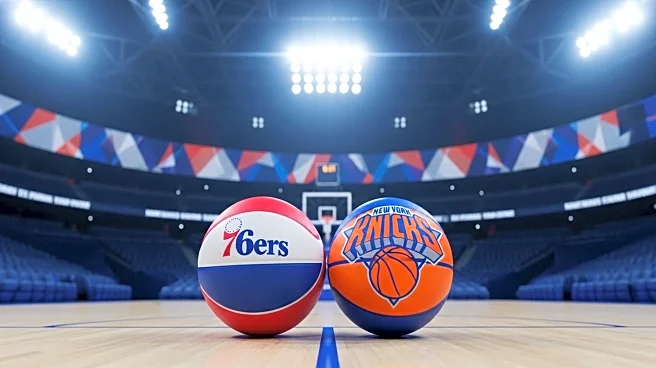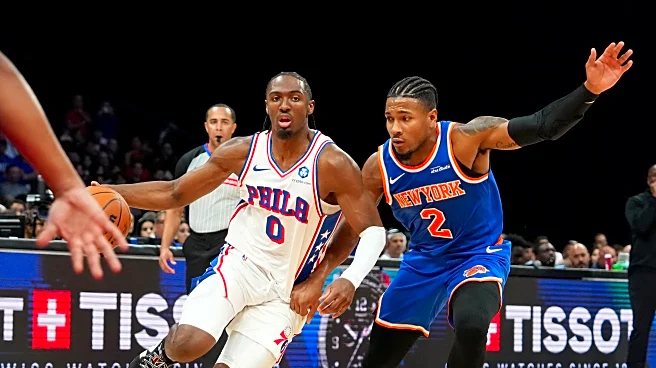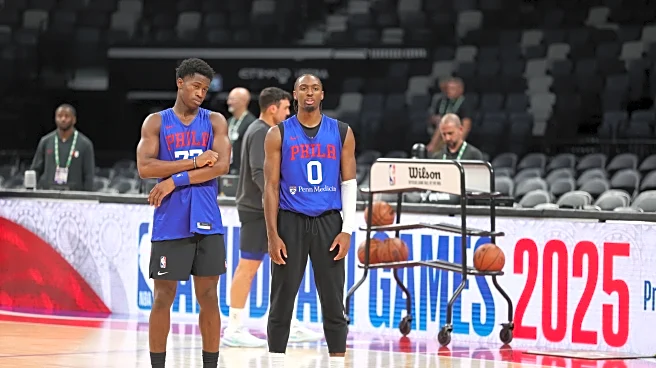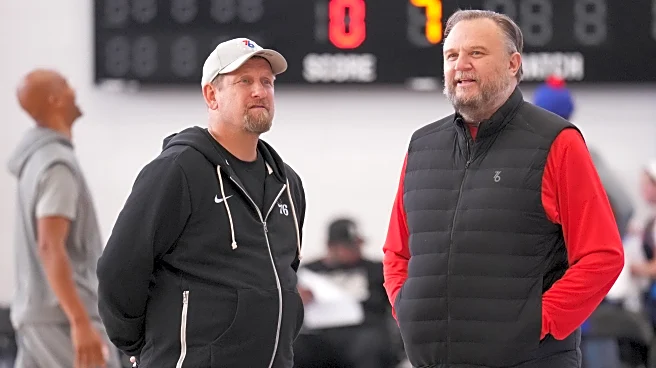At the start of free agency, the Sixers were reluctant to use their $5.7 million taxpayer mid-level exception, even though not doing so cost them Guerschon Yabusele
. Using it would have hard-capped them at the $207.8 million second apron, which would have limited how much they could offer Quentin Grimes on a long-term deal. It also would have sent a clear signal to other teams about how much to offer him.Now that Grimes signed his one-year, $8.7 million qualifying offer, though, the Sixers have
no such roadblocks anymore.
The Sixers currently have $194.6 million in salary on their books and an apron total of $194.8 million. (Justin Edwards counts as $2.3 million—the two-year veteran-minimum salary—instead of his actual $2.05 million salary for apron purposes.) That leaves them roughly $1.1 million below the first apron and $12.9 million below the second apron with one open roster spot. Even after using the taxpayer MLE, they’d still be roughly $7.25 million below the second apron, which would give them plenty of wiggle room below the hard cap.
There’s no guarantee that the Sixers will actually use the taxpayer MLE, of course. After all, that would push them even further above the luxury-tax threshold, which would make it that much harder for them to duck the tax at the trade deadline. But if they do intend to use it at some point, it’s worth reviewing what they can—and can’t—do with it.
First, let’s start with what they can’t do. Once they cross the first apron—which they’d do as soon as they use the taxpayer MLE, barring another salary dump—they won’t be able to sign anyone on the buyout market who was earning more than the $14.1 million non-taxpayer MLE after the regular season begins. That means they can’t sign any of Collin Sexton, Jusuf Nurkić or Nikola Vučević if they get bought out at some point after Oct. 21.
The Sixers also can’t use the taxpayer MLE to acquire someone who’s already under contract. Under the latest collective bargaining agreement, teams can use the non-taxpayer MLE and the room MLE as a trade exception, but teams can only use the taxpayer MLE to sign free agents. If the Sixers salary-dumped Kelly Oubre Jr. or Andre Drummond, they would be able to use the non-taxpayer MLE as a trade exception, although doing so would hard-cap them at the first apron rather than the second.
So, what can the Sixers do with the taxpayer MLE? They can sign anyone who gets bought out that was earning less than the non-taxpayer MLE or anyone else on the free-agent market. They could also use it to convert Dominick Barlow or Jabari Walker from a two-way deal to a standard contract, which is exactly what they did with Ricky Council IV in April 2024. However, contracts signed with the taxpayer MLE can be no more than two years in length. Under the previous CBA, they could be up to three years.
The taxpayer MLE will be worth the full $5.7 million until Jan. 10, 2026. On Jan. 10, it begins to prorate downward by roughly $13,000 per day. By the time the trade deadline passes, it’ll be worth somewhere around $5.3 million rather than $5.7 million. So, if the Sixers do decide to convert Barlow or Walker sometime late in the season, they could still offer far more than a minimum contract with the remainder of their taxpayer MLE.
Granted, the Sixers aren’t the only team going into the season with their mid-level exception intact. The Chicago Bulls and Charlotte Hornets, both of whom are at least $13 million below the luxury-tax line, have yet to touch their non-taxpayer MLEs. The Brooklyn Nets also have their full $8.8 million room MLE at their disposal. However, most title hopefuls have spent theirs or are hard-capped at either apron and don’t have enough wiggle room to use theirs. That could give the Sixers an advantage on the buyout market for players who were previously earning $14 million or less.
It’s fair to wonder whether the Sixers will be willing to sink more money into this roster if they don’t look like a clear-cut title contender by January, though, particularly if it means staying above the luxury-tax threshold after the trade deadline. After all, they’ve only paid the tax twice during Josh Harris’ tenure as owner (the 2020-21 and 2021-22 campaigns) and have ended less than $1 million below the tax line each of the last three years. Last season, they traded two second-round picks to dump KJ Martin, whose contract was fully non-guaranteed in 2025-26, just to duck the tax.
The Sixers will enter the season with the taxpayer MLE in their back pocket. But given their recent history with ducking the tax, it’s fair to be skeptical about their willingness to use it at some point this year.
Unless otherwise noted, all stats via NBA.com, PBPStats, Cleaning the Glass or Basketball Reference. All salary information via Salary Swish and salary-cap information via RealGM.
Follow Bryan on Bluesky.
